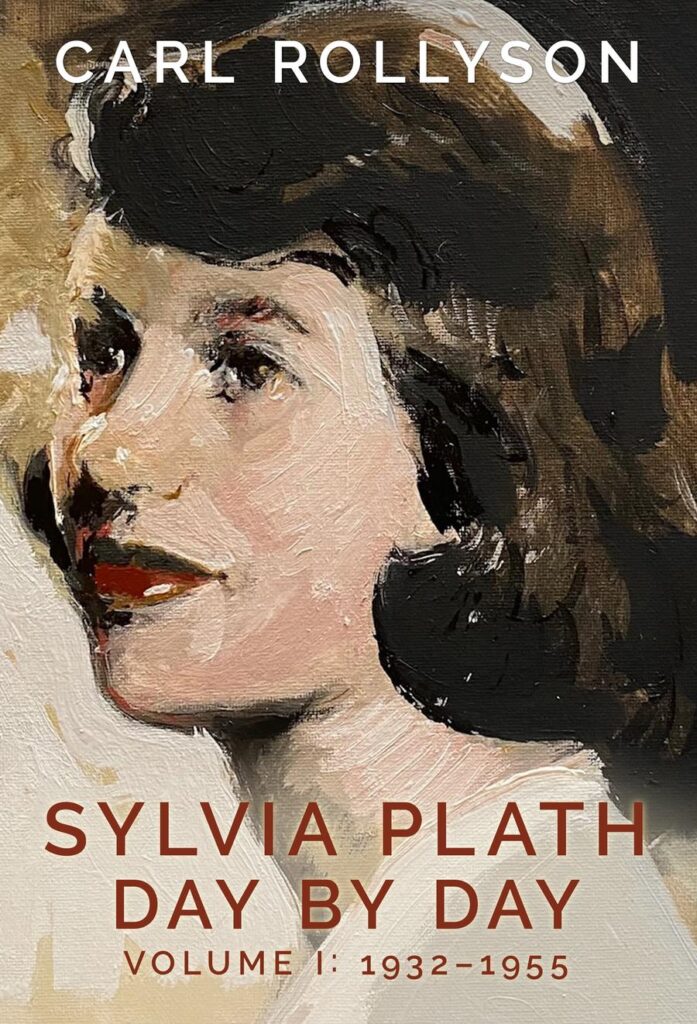Sylvia Plath’s Biography: A Reckoning Finally Begins
Emily Van Dyne shows that Plath’s husband, Ted Hughes, sought to dominate the legacy of the dead poet by creating a malign mythology in his book, ‘Birthday Letters.’

‘Loving Sylvia Plath: A Reclamation’
By Emily Van Duyne
W.W. Norton, 320 pages
“Loving Sylvia Plath” is such a bold and original book that it confirms my conviction that we are only at the beginning of coming to terms with the poet’s biography.
That may seem an astonishing statement to those tired of Plath biographies and say, as Emily Van Duyne knows quite well, “No more Plath.” Reviewers hailed Heather Clark’s “Recent Red Comet: The Short Life and Blazing Art of Sylvia Plath” as “definitive,” and seemed almost giddy with the notion that the full life of this modern literary icon has now been completely canvassed.
As Ms. Van Duyne demonstrates, not even Ms. Clark’s monumental work has escaped the baleful manipulations of Plath’s estranged husband, Ted Hughes. By refusing to cooperate with Plath biographers — including the so-called authorized biographer, Anne Stevenson — by making a mess of Plath’s archive, losing and destroying items, including journals, and treating her work with such laxity that some of it was stolen before it could be properly processed, arrogating to himself the prime position as her interpreter, Hughes made it difficult for succeeding biographers to create a comprehensive depiction of a great artist.
Not only did Hughes threaten biographers with legal action, he threatened Plath with a lawsuit if she continued to talk about their fraught marriage. Ms. Van Dyne shows that Hughes sought to dominate the legacy of the dead poet by creating a malign mythology in his book, “Birthday Letters,” a deterministic vision of a helpless Hughes who could not deter a woman bound to kill herself.

Ms. Van Duyne, herself a victim of intimate partner violence, scrutinizes a pattern of violence that Hughes perpetrated not only on Plath but on other women, one of whom he tried to strangle just as he attempted to throttle Plath on their honeymoon. Ms. Van Duyne, a superb reader of both Plath’s writing and her biography, identifies key moments in a marriage that was violent from the beginning.
A pattern is established that goes way beyond the “he said, she said” reaction to Plath’s own terrified efforts to explain how her husband tried to batter her into submission. Ms. Van Duyne might have added two more pieces of evidence: The warning of Plath’s mentor, Olive Higgins Prouty, that Hughes was a violent man, and the testimony of the poet’s contemporary, Jane Anderson, who heard Plath say that Hughes was a sadist.
Why then has the Hughes legend of Plath’s life prevailed in the popular mind? Ms. Van Duyne shows how Hughes purposely omitted several of Plath’s great poems about her troubled marriage in her famous volume, “Ariel.” He changed the structure and the thematic thrust, and chose, instead, poems that emphasized a suicidal personality, as if the poems were predictive of her death.
As Ms. Van Duyne acknowledges in her notes, the very originality of her book derives from a lifetime of not only reading Plath but also all the Plath biographies. She rehabilitates, for example, Paul Alexander, the biographer and bête noire of Janet Malcolm’s influential book about Plath biography, “The Silent Woman.” Early on, Mr. Alexander detected the strain of violence that Ms. Van Duyne has now instated.
Ms. Van Duyne does not say so, but one other impact of her book is to destroy much of Malcolm’s reading of a Plath picked over and exploited by biographers. On the contrary, it was Ted Hughes who did the picking and promotion of his tendentious portrait of Plath.
Only a critic as steeped in the literature of Sylvia Plath could have produced such an innovative book. I’m reminded of what T.S. Eliot said in “Tradition and the Individual Talent,” “Some one said: ‘The dead writers are remote from us because we know so much more than they did.’ Precisely, and they are that which we know.”
In other words, the Ted Hughes who hid so much from biographers, the Ted Hughes who distorted his wife’s work and his part in it, was there all along in the earlier Plath biographies, which Ms. Van Duyne has not so much superseded as she has discovered and validated what was already there, if only those biographers had looked as carefully at the matrix inherent in their own work, and that Ms. Van Duyne has now powerfully revealed.
Mr. Rollyson’s “The Making of Sylvia Plath” will be published in November. His podcast with Emily Van Duyne can be accessed here.

